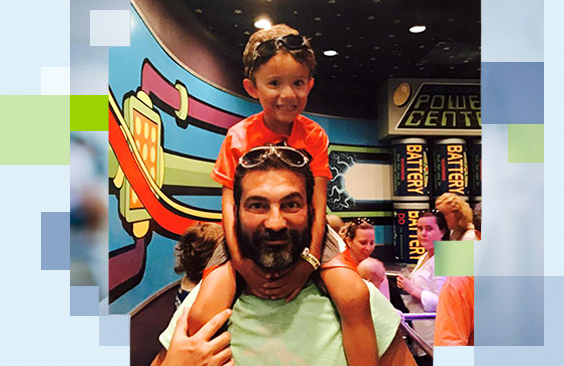Our Experience

Living with Aniridia: Ways to Support a Child with Aniridia
Get Informed
As parents who have walked this path as well, we can tell you that getting informed, and learning as much as you can about this disorder will give you the tools to understand it. The more you know, the more armed with knowledge you are, the more equipped you will be to handle whatever comes your way. There will be many unexpected twists and turns, but that’s how life goes! As a parent, you are your child’s first and most powerful advocate, so learn everything you can about aniridia.
Community is Key
Peer support is another aspect that can really help ease the tension, and knowing others out there are facing the same challenges can really take some of the weight off your shoulders. If you want to talk to parents who have been there personally, feel free to reach out to us, connect with us on social media, or check out the many resources we have provided throughout this site to learn more.
Medical Support
Aniridia presents a myriad of challenges, the majority of which are medically-related, and it is absolutely essential to develop a team who understands the needs of your child. It is imperative that you have a pediatrician who is fully aware of the intricacies of aniridia, and can connect you with the other medical specialists that may be required to manage your child’s healthcare, particularly in regards to establishing a relationship with a pediatric opthamologist. Due to the sensitive nature of aniridia, children with this disorder must be monitored quite regularly for glaucoma and other related complications.
Creating a Nurturing Environment for the Aniridic Child
It is highly beneficial to create an environment in which your child can, not only be comfortable in, but also thrive within. Glare and strong light can be difficult to deal with, as a lack of iris causes the eye to lack the ability to regulate the amount of light that enters the eye. Due to this, ensure that whenever indoors, your child is positioned away from direct sunlight, and if possible, keep their back facing the light source.
When outdoors, it is exceptionally important that your child wear protective sunglasses, as well as sun hats to minimize the amount of light.
Visually Stimulate
Babies, whether they are aniridic or not, see high contrast objects and patterns best, so use this knowledge as inspiration and keep it in mind when choosing toys, books, and items for their living space. Black and white, as well as bold primary colors in high contrast are ideal. If you want to take this concept even further, you can consider yourself as part of your child’s learning environment, and dress in a similar, high contrast manner.
Raising Awareness
We are parents, first and foremost. Loving, devoted, iron-willed parents whose son was diagnosed with aniridia right after birth. This diagnosis clearly changed our lives, and forced us on the path of becoming avid researchers and advocates, who will stop at nothing to ensure our son lives life to the best level of quality we can provide him. We’re sure you’re in a similar position if you also have a child who has received an aniridia diagnosis.
Because of this, it is our aim and mission to provide information to those facing a similar journey, and we wish to do our best in helping others understand the best ways to communicate and acquire support. We will do our very best to use this platform to offer a unique yet personal method to offer support, share news, information, treatment options, and medical breakthroughs regarding aniridia.
The need for awareness of aniridia is essential. This disorder affects somewhere between 1 in 50,000 and 1 in 100,000 babies throughout the world, and while there are many different treatments to help handle the many issues that can arise as a result of the disease, there is no cure. Yet.
Recent News
 Surfers With Aniridia Catch WavesJune 30, 2016 - 9:54 pm
Surfers With Aniridia Catch WavesJune 30, 2016 - 9:54 pmStudents, including Nadira Calderon who has aniridia, of the Braille Institute of Los Angeles learn to surf at local Manhattan Beach, though a partnership with Learn to Surf LA. These students are defying the odds of what’s possible with vision impairment. Click here to read more
 12-year-old Belmont swimmer is heading to the Paralympic trialsJune 18, 2016 - 9:48 pm
12-year-old Belmont swimmer is heading to the Paralympic trialsJune 18, 2016 - 9:48 pmMadeleine Babcock is a fearless, champion swimmer with aniridia and glaucoma, vying for a chance to compete in the Rio Olympic games. At just 12, she is aiming for a spot on the US Paralympic Team. Click here to read more
 eSight Technology Helps Those with Aniridia SeeMay 11, 2016 - 10:19 pm
eSight Technology Helps Those with Aniridia SeeMay 11, 2016 - 10:19 pmFor the first time, a 12-year-old girl who is legally blind due to aniridia, was able to see clearly with the help of the breakthrough eSight technology. Normally unable to see across a room, she experienced 20/20 vision for the first time using eSight electronic glasses. Click here to read more
